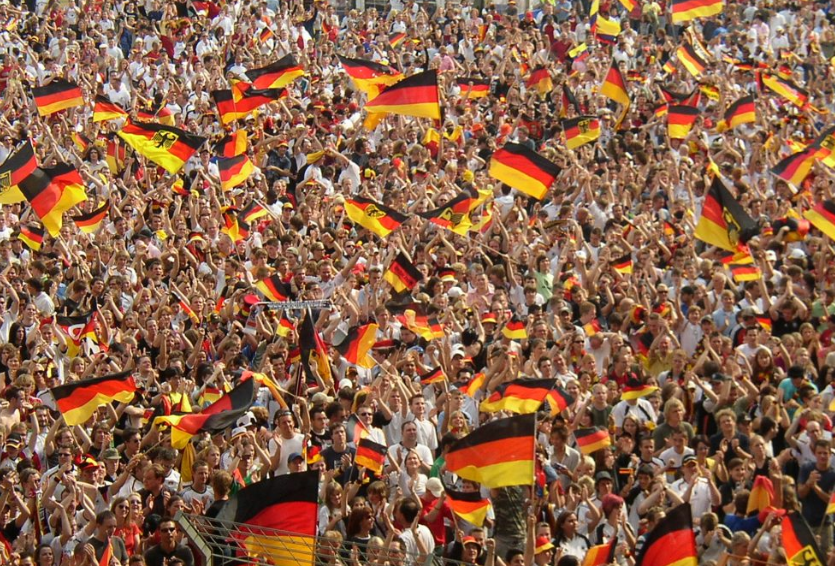The Andorra National Festival, held annually on June 23, is a vibrant celebration that brings the entire nation together. With its rich history and cultural significance, this festival showcases the essence of Andorran traditions, customs, and values. In this article, we will delve into the captivating world of Andorra’s national festival, exploring its celebrations, traditions, and the importance it holds for the country and its people.
Celebrations and Traditions of Andorra National Festival
The preparations for Andorra’s national festival begin weeks in advance. Streets are adorned with colorful decorations, and the atmosphere is filled with excitement. The main activities and events during the festival include parades, live music performances, dance shows, and traditional sporting competitions. Locals and visitors alike come together to witness these festivities, creating a vibrant and joyous ambiance.
One of the highlights of the festival is the traditional customs and rituals that are observed. From traditional dress to symbolic ceremonies, Andorran culture takes center stage. The streets come alive with processions that showcase the rich heritage of the country, including traditional music and dance performances. These customs and rituals serve as a reminder of the deep-rooted traditions that have been passed down through generations.
Significance and Cultural Importance of Andorra National Festival
The Andorra National Festival holds immense significance for the country and its people. It is a time when the entire nation unites to celebrate its unique identity and heritage. The festival serves as a symbol of pride and solidarity, allowing Andorrans to reconnect with their roots and preserve their cultural traditions.
Furthermore, the festival plays a crucial role in preserving Andorran culture. It serves as a platform for artists, musicians, and performers to showcase their talent and contribute to the cultural fabric of the nation. The festival also offers an opportunity for local artisans and craftsmen to display their traditional crafts, promoting their work and ensuring the continuation of traditional craftsmanship.
Moreover, the festival has a positive impact on the local economy. The influx of tourists during this period boosts various sectors such as hospitality, retail, and transportation. Local businesses thrive as visitors indulge in traditional cuisine, purchase souvenirs, and participate in local activities. The festival’s economic benefits contribute to the overall growth and development of Andorra.
Community Participation and Inclusivity in Andorra National Festival
The Andorra National Festival is not limited to a specific age group or community. It is a celebration that encourages active participation from both locals and visitors. People from all walks of life come together to enjoy the festivities, creating an atmosphere of inclusivity and unity.
During the festival, various activities are organized to engage different age groups. Children participate in art workshops, face painting, and storytelling sessions, allowing them to learn about their cultural heritage in a fun and interactive way. Adults can take part in traditional dance classes, sporting competitions, and culinary workshops, providing opportunities for active involvement and skill-sharing.
The festival also embraces diversity by showcasing the multicultural aspect of Andorra. It welcomes individuals from different backgrounds, promoting intercultural exchange and fostering a sense of understanding and acceptance. This inclusivity enhances the festival’s atmosphere, making it a truly enriching experience for all.
Tourism and Promotional Opportunities
Andorra’s national festival has become a significant attraction for tourists. The unique cultural experience it offers draws visitors from around the world. The festival provides a glimpse into Andorran traditions and customs, creating a memorable experience that leaves a lasting impression on visitors.
The tourism industry in Andorra actively promotes the national festival to attract more visitors. Through marketing campaigns, social media promotions, and partnerships with travel agencies, the festival’s allure is spread far and wide. Tourists are enticed by the opportunity to immerse themselves in the vibrant celebrations, taste traditional cuisine, and witness the cultural performances that take place during the festival.
However, increased tourism also presents challenges for the festival and the local community. Managing the influx of visitors requires careful planning and infrastructure development. Balancing the preservation of cultural authenticity with the demands of a growing number of tourists is a delicate task. Sustainable tourism practices are essential to ensure that the festival can be enjoyed by future generations while preserving the natural and cultural heritage of Andorra.
Conclusion
The Andorra National Festival on June 23 is a cherished event that showcases the rich cultural heritage of the country. It is a celebration that brings together the entire nation in a spirit of unity, pride, and joy. From the vibrant parades to the traditional customs and rituals, the festival encapsulates the essence of Andorran traditions.
The festival’s significance extends beyond cultural celebrations. It plays a vital role in preserving Andorra’s cultural heritage, fostering community participation and inclusivity, and boosting the local economy through tourism. By embracing diversity and promoting intercultural exchange, the festival strengthens the social fabric of the nation.
As Andorra continues to evolve, the Andorra National Festival serves as a powerful reminder of the country’s roots and values. It stands as a testament to the resilience of Andorran culture and the enduring spirit of its people.
FAQs (Frequently Asked Questions)
- When did the Andorra National Festival first begin?
The Andorra National Festival has a long-standing history and has been celebrated for many years. Its origins can be traced back to ancient Andorran traditions.
- Are visitors allowed to participate in the festival’s activities?
Absolutely! The festival warmly welcomes visitors to join in the celebrations and experience Andorran culture firsthand. Everyone is encouraged to participate in various activities and immerse themselves in the festive spirit.
- What are some traditional dishes served during the festival?
The Andorra National Festival offers a delightful culinary experience. Traditional dishes such as trinxat (cabbage and potato dish), escudella (meat and vegetable stew), and coca (a savory pastry) are commonly enjoyed during the festival.
- Is the festival celebrated only in Andorra la Vella?
While Andorra la Vella, the capital city, is a focal point of the festival, celebrations take place throughout the country. Different regions and towns in Andorra organize their own unique events and festivities, adding to the diversity and richness of the overall celebration.
- Are there any special traditions or rituals associated with the festival?
Yes, the Andorra National Festival is filled with special traditions and rituals. One such tradition is the lighting of bonfires, symbolizing the triumph of light over darkness. Traditional dances, such as the Sardana and Contrapàs, are also performed during the festival, showcasing Andorra’s cultural heritage.
References
- Andorra Tourism: https://www.visitandorra.com/en/
- Andorra.com: https://www.andorra.com/
- Lonely Planet Andorra: https://www.lonelyplanet.com/andorra

